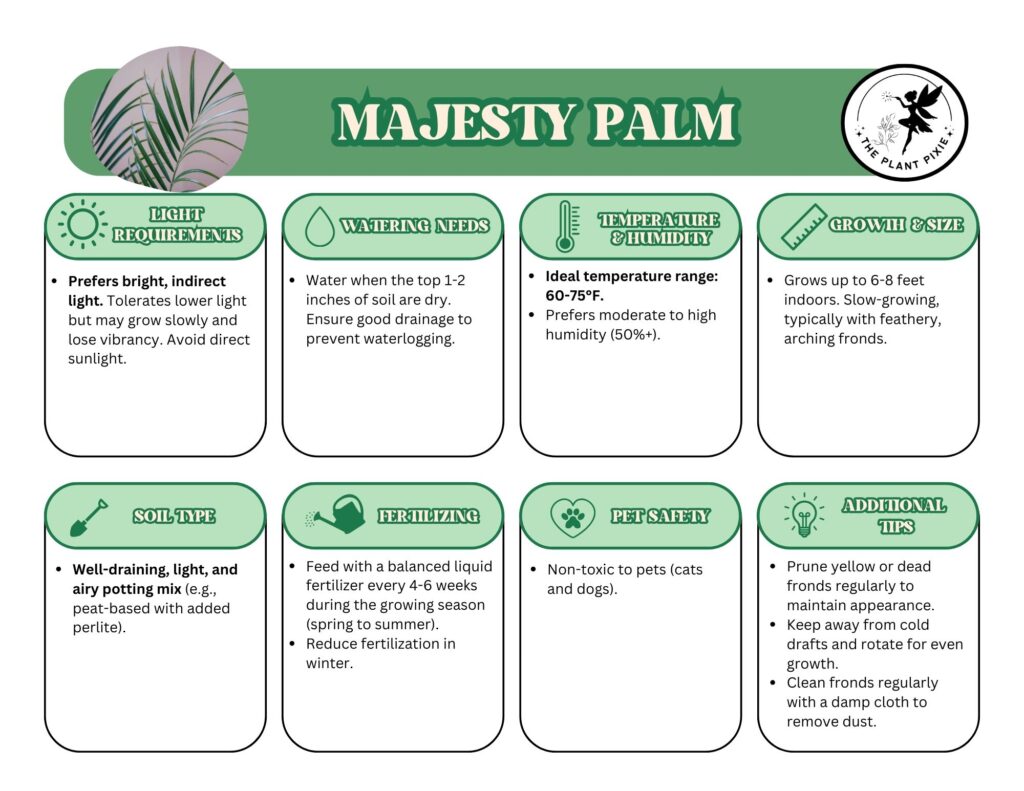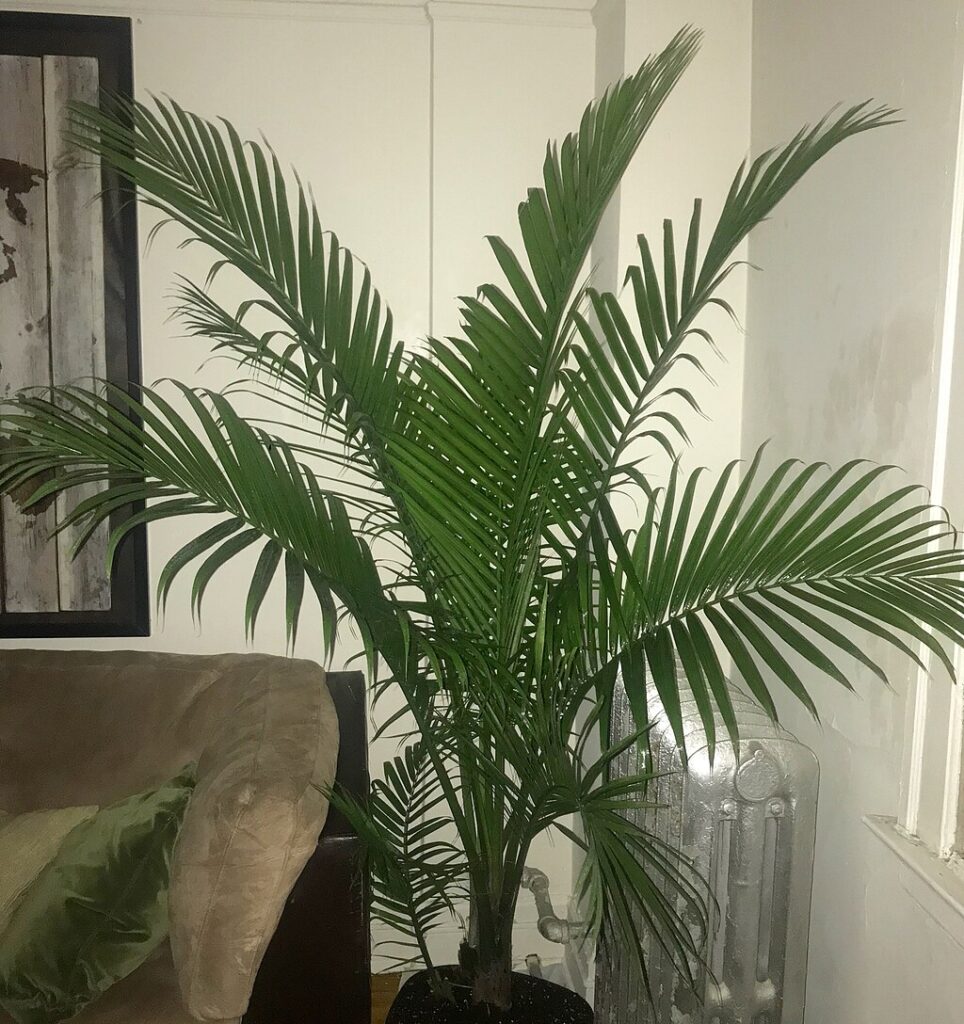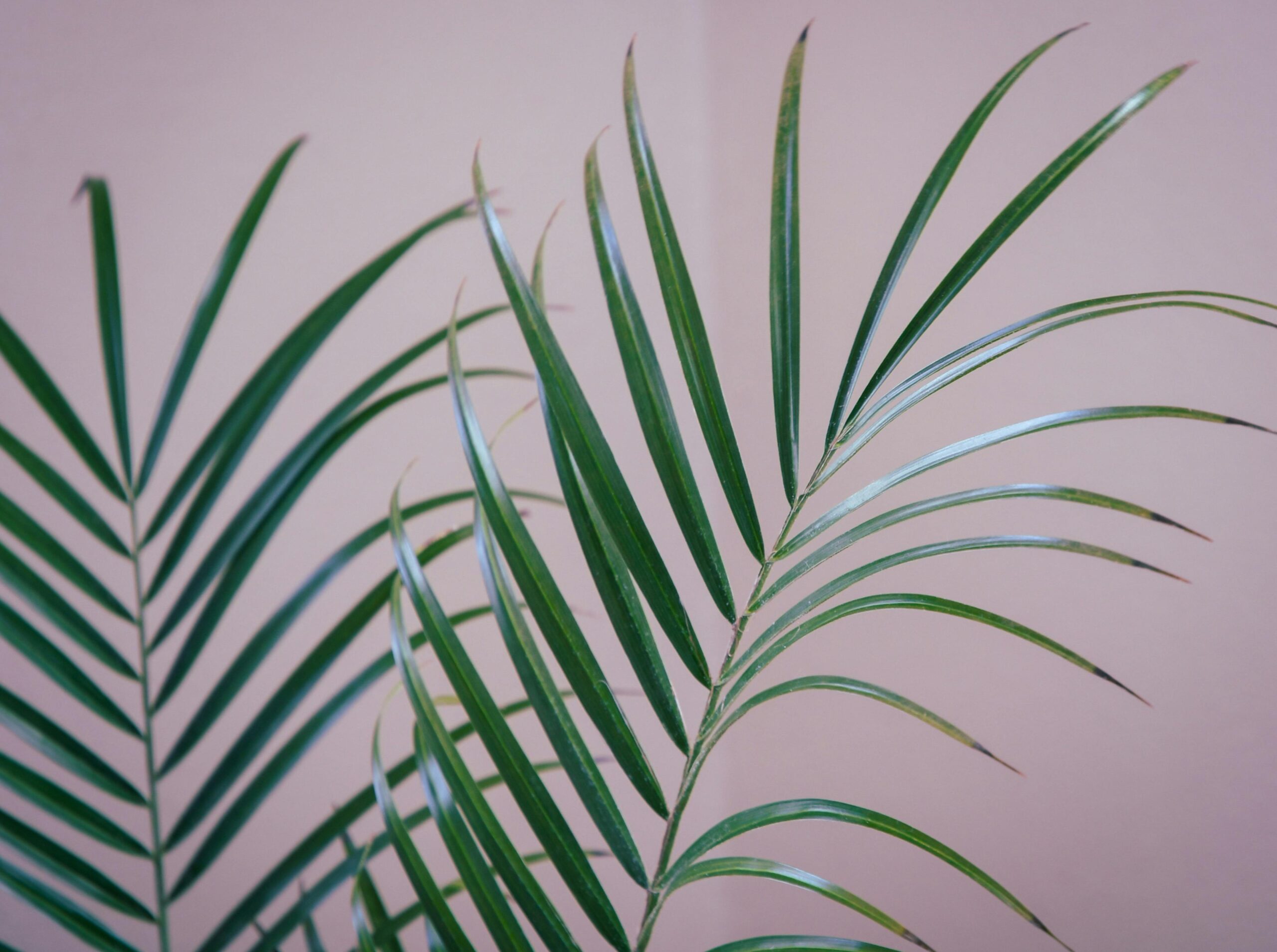
Botanical Overview:

- Scientific Name: Ravenea rivularis
- Common Names: Majesty Palm, Majestic Palm
- Family: Arecaceae (Palm Family)
- Native Range: Native to the island of Madagascar.
- Growth Habit: A slow-growing, elegant palm with feathery, arching fronds. It can grow quite tall indoors, making it an attractive focal point in a room.
Ideal Growing Conditions:
- Light:
Prefers bright, indirect light. It can tolerate lower light levels but may grow slowly and lose its lush appearance. Avoid direct sunlight, which can scorch the leaves. - Temperature:
Ideal temperature range is between 65-85°F (18-29°C). It does not tolerate frost or cold drafts. Temperatures below 50°F (10°C) can damage the plant. - Humidity:
Prefers moderate to high humidity (50%-60%+). It may tolerate average indoor humidity but thrives in more humid conditions. Regular misting or using a humidifier can help in dry climates.
Watering Needs:
- Frequency:
Water the majesty palm when the top 1-2 inches of soil are dry. In winter, reduce watering, as the plant’s growth slows. Overwatering can lead to root rot, so ensure the soil is well-draining. - Method:
Water thoroughly, allowing water to drain from the bottom of the pot. Make sure the plant doesn’t sit in excess water, as it can cause root rot. - Signs of Underwatering:
Brown tips and edges on leaves are common signs of underwatering. Ensure consistent moisture and don’t allow the soil to dry out too much.
Fertilization:
- Frequency:
Feed with a balanced, water-soluble fertilizer (such as NPK 10-10-10) every 4-6 weeks during the growing season (spring through summer). During the fall and winter months, reduce fertilization as the plant’s growth slows. - Method:
Use half the recommended strength to avoid fertilizer burn. Always water the plant before applying fertilizer to prevent root damage.
Common Issues & Solutions:
- Yellowing Leaves:
- Cause: Overwatering or underwatering, nutrient deficiencies, or low light.
- Solution: Check watering schedule and ensure the soil is draining properly. Move the plant to a brighter location if necessary.
- Brown Leaf Tips:
- Cause: Low humidity, underwatering, or excessive fertilizer.
- Solution: Increase humidity by misting or using a humidifier. Ensure proper watering and reduce fertilizer use if needed.
- Root Rot:
- Cause: Overwatering or poor drainage.
- Solution: Ensure the pot has drainage holes, and let the plant dry out between waterings. If root rot occurs, trim the affected roots and repot the plant in fresh, well-draining soil.
- Pests:
Common pests include spider mites, scale, and mealybugs. Treat infestations with insecticidal soap, neem oil, or wipe the leaves with a damp cloth.
Pruning & Training:
- Pruning:
Remove yellowing or dead fronds by cutting them off at the base. Trim brown tips with clean scissors to improve appearance. Be careful not to remove healthy green fronds, as these are crucial for the plant’s energy production. - Training:
Majesty palms are naturally upright, but you can train them to grow in a specific direction by gently repositioning the plant or supporting the fronds with stakes. Avoid heavy pruning, as it can hinder the plant’s growth.
Repotting & Potting:
- Repotting Frequency:
Majesty palms grow slowly, so they typically need repotting every 2-3 years or when they outgrow their current pot. Repot in the spring or early summer for the best results. - Pot Size:
Choose a pot that is 1-2 inches larger in diameter than the current one. Ensure the pot has good drainage holes to prevent water from accumulating at the bottom. - Soil:
Use a well-draining potting mix, such as a general-purpose mix with added perlite or sand for extra drainage. A palm-specific mix can also be a good choice.
Propagation:
- Method:
Majesty palms are typically propagated by seed, though it can be a slow process. The seeds should be planted in a well-draining mix, kept warm (around 75°F or 24°C), and maintained in high humidity. Seeds may take several weeks to months to germinate. - Success Rate:
Propagating through seeds can be tricky and time-consuming, making it more common to purchase a mature plant rather than attempt propagation.
Benefits of Owning a Majesty Palm:
- Air Purification:
Like many houseplants, majesty palms help purify the air by removing toxins like formaldehyde and benzene, improving indoor air quality. - Aesthetic Appeal:
The graceful, arching fronds and elegant appearance of the majesty palm make it a striking focal point in any room. It’s especially good for adding a tropical feel to your home or office. - Low Maintenance:
While it has specific needs, the majesty palm is generally easy to care for once its environment is set up properly. It doesn’t require frequent pruning or repotting.
Fun Facts:
- Slow Growth:
Majesty palms grow slowly, particularly indoors, and can take several years to reach their full height. However, they remain relatively compact for quite a while, making them suitable for indoor spaces. - Tropical Origins:
Native to Madagascar, the majesty palm thrives in humid, tropical conditions, which is why it benefits from higher humidity levels indoors. - Symbolism:
In some cultures, palms symbolize peace, victory, and fertility. The majesty palm, in particular, is often seen as a symbol of elegance and luxury.
Additional Tips:
- Rotate Regularly:
Rotate the palm every few weeks to ensure it grows evenly. This helps prevent it from becoming lopsided and encourages uniform growth. - Leaf Care:
Wipe the fronds occasionally with a damp cloth to remove dust and help the plant photosynthesize more effectively. This also enhances its natural shine. - Avoid Cold Drafts:
The majesty palm is sensitive to cold drafts and sudden temperature changes. Keep it away from windows with drafts or air conditioners.
With its elegant appearance, air-purifying benefits, and low maintenance once established, the majesty palm makes an excellent addition to any indoor plant collection.

